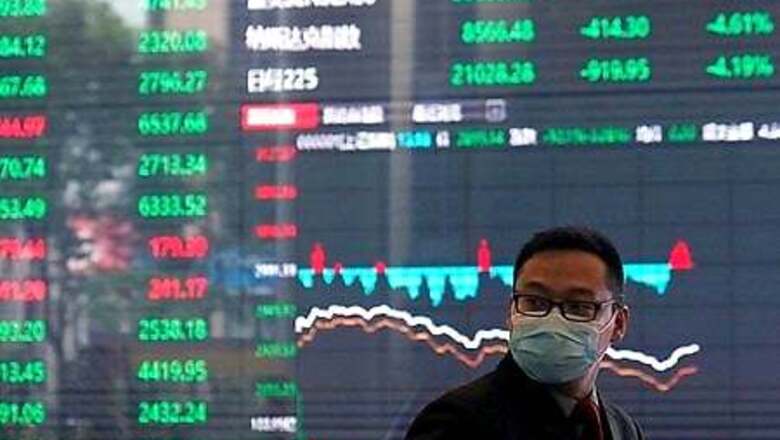
views
TOKYO/HONG KONG: Asian shares and U.S. stock futures regained some footing on Tuesday following a small bounce in European markets as investors looked to whether high-flying U.S. tech shares could recover from their recent rout.
Japan’s Nikkei advanced 0.4% as revised data confirmed the nation had slumped into its worst postwar contraction, with business spending taking a bigger hit from the coronavirus than initially estimated.
China’s blue-chip index tacked on 0.2% while Hong Kong’s Hang Seng gained 0.6%, even as President Donald Trump on Monday ramped up his anti-Chinese rhetoric by again raising the idea of de-coupling the U.S. and Chinese economies.
Elsewhere, Australian shares rose for a second straight session, up 0.8% as optimism around the development of potential COVID-19 vaccines underpinned investor sentiment, with miners and financials leading the charge. That left MSCI’s broadest index of Asia-Pacific sharesoutside Japan up 0.37%.
U.S. financial markets were shut on Monday for a public holiday while Europe’s STOXX 600 index was 1.7% higher.
Globally traded U.S. S&P500 futures erased their Monday losses to trade 0.5% higher. Tech shares remained more fragile, however, with Nasdaq futures dipping 0.1% after having lost more than 6% late last week.
While many market players were unable to pinpoint a single trigger for the Nasdaq’s sudden plunge, valuations have been stretched given its sharp 75% gain from a bottom hit in March.
“Those tech shares were becoming expensive so I would see their latest fall as a healthy correction,” said Masahiro Ichikawa, senior strategist at Sumitomo Mitsui DS Asset Management.
Risk assets also face headwind from creeping doubts that U.S. policymakers may not be willing to compile massive stimulus as some traders had hoped for.
“The headline figures from Friday’s U.S. jobs data were pretty good, so that could lead to speculation policymakers may no longer be eager to dole out trillions of dollars to support the economy,” said Masahiko Loo, portfolio manager at AllianceBernstein.
“Markets may have gone too far in expecting the Federal Reserve to announce more easing steps this month,” he said, adding receding expectations is one reason behind a rise in U.S. bond yields last week.
The 10-year U.S. Treasuries yield stood at 0.716%, off a five-month low of 0.504% touched in August.
In currencies, sterling dropped after the European Union told Britain on Monday that there would be no trade deal if it tried to tinker with the Brexit divorce treaty.
The warning came after British Prime Minister Boris Johnson’s government was reported to be planning new legislation to override parts of the Brexit Withdrawal Agreement it signed in January.
The pound last fetched $1.3147, having lost 0.80% on Monday to $1.3167, near its lowest levels in two weeks.
Other currencies barely moved with rises in U.S. yields helping to stem the dollar’s recent weakness.
The euro eased slightly overnight to $1.1818 and was last trading at $1.1804, while the dollar was little moved at 106.31 yen. Gold prices eased on Tuesday, although rising doubts over the economic recovery from the COVID-19 slump limited losses. Spot gold was down 0.1% at $1,925.96 per ounce.
Oil prices dropped to five-week lows after Saudi Arabia made its deepest monthly price cuts to supply for Asia in five months and as uncertainty over Chinese demand clouds the market’s recovery.
U.S. WTI futures fell 1.6% to $39.13 per barrel.
Disclaimer: This post has been auto-published from an agency feed without any modifications to the text and has not been reviewed by an editor




















Comments
0 comment